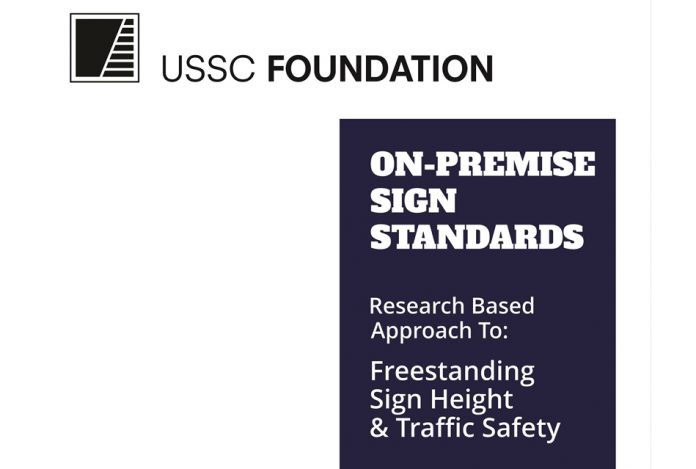The USSC Foundation Board of Directors has funded a new research study intended to investigate freestanding sign height from the perspective of sign legibility and traffic safety. This new USSCF sign study will be entitled: The Effect of Mounting Height on On-Premise Sign Visibility and Traffic Safety. The Foundation has retained the services of Philip Garvey of Penn State University to complete the research, expected Fall 2018.
Previously the USSC Foundation examined minimum freestanding sign height via a Penn State study in 2003. That research demonstrated that low-mounted signs (6′-0” tall and under) are harder for motorists to see because the view of low-mounted signs is blocked a high percentage of the time, particularly on busy roadways and 4 lane roadways. The study found that low-mounted signs may be inappropriate, from a traffic safety standpoint, on these types of roadways..
The 2018 USSCF new study will support the establishment of USSC Foundation On-Premise Guideline Standards for Sign Mounting Height Standards, and answer the question: if 6′-0” is too low, what is the appropriate height for freestanding signs in terms of sign visibility and legibility?
Sign height, and more specifically on-premise freestanding sign mounting height, is a sign design characteristic that is generally viewed to fall within the power of local governments to control via content-neutral time, place and manner regulations. Concerns have been raised when municipalities appear to treat sign mounting height as an aesthetic issue, and in turn fail to pay attention to the visibility and traffic safety implications of lower-mounted signs on busy roadways. Prohibiting taller signs on roadways where they may be needed from a sign visibility and legibility perspective can have consequences for a motorist’s ability to see and read sign.
Exploration of these three goals will result in the data necessary to develop guideline standards or recommendations for freestanding on-premise sign mounting height. The objective of the study will be to create standards and/or metrics for the establishment of recommended freestanding sign height based upon existing research and practice, and to describe variations on the standard for different road types if required.
According to Richard Crawford, USSCF Board Member, “A 6’-0” sign height limit is the apparent sweet spot for many regulators. Why 6’-0”? No one knows. There is certainly no empirical research that suggests that a 6’-0” mounting height is appropriate for a busy road or highway. In fact, the 6’-0” height limit likely ignores the traffic safety implications of placing sign messages intended for drivers at such a low mounting height.”
For the past twenty years or more, some regulators have decided that low mounted signs are preferable (“we like this appearance aesthetically”); that they fit within the landscape (translation: “they are less visible, good!”), and that they don’t shout-out, and they bring the signs down to a human scale (assuming people are riding on horses). When the idea of low-mounted signs is questioned, the response is usually something to this effect: “well after all, towns like Hilton Head and Scottsdale are doing just fine with low mounted signs.”
The new USSC Foundation research will provide information to both sign companies, sign owners, and sign regulators on recommended freestanding sign height based on science. The board of directors encourages sign professionals to make a donation to the USSC Foundation for research. More studies are in the queue. The USSCF has created distinct categories for giving, including two categories that designate donations solely for research, sometimes referred to as restricted giving or directed giving.
For more details, visit www.usscfoundation.org, email [email protected], or call (215) 785-1922.











